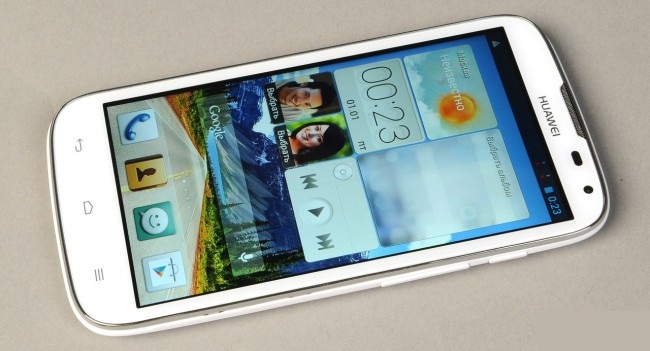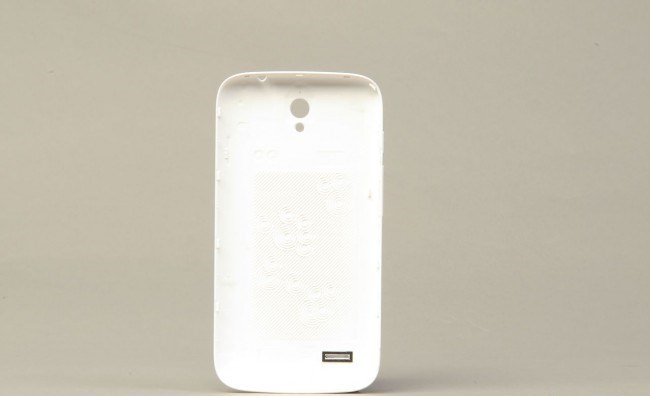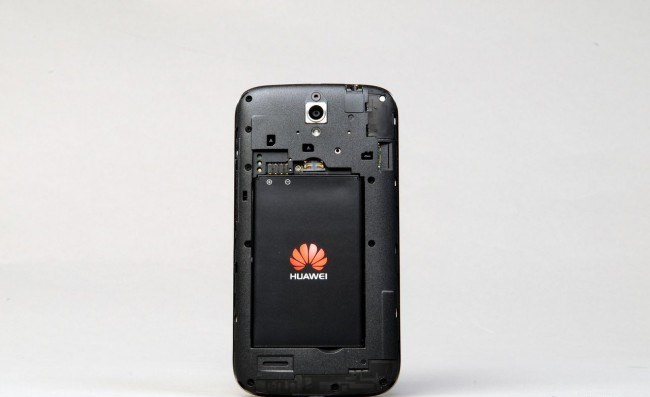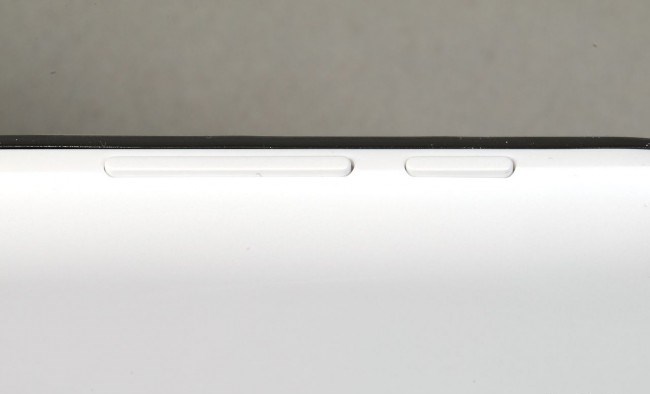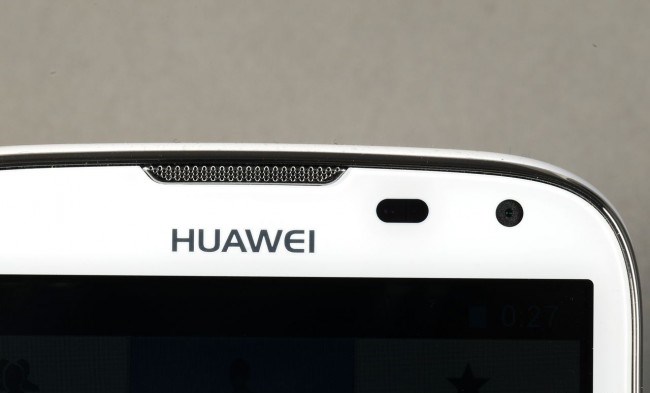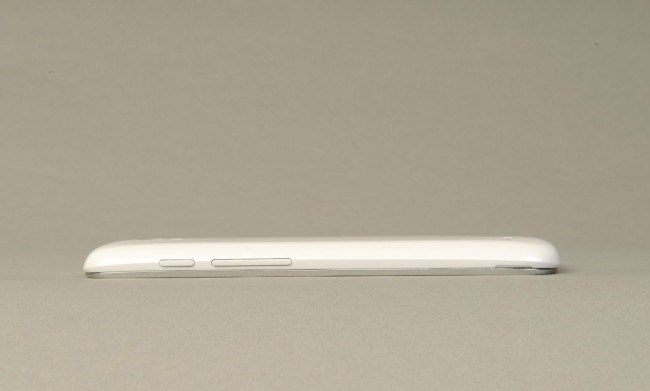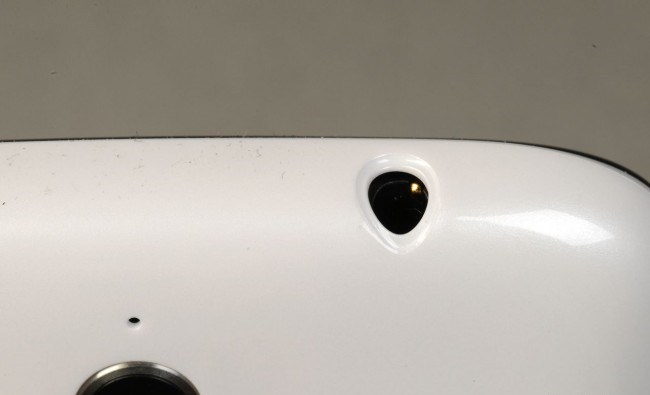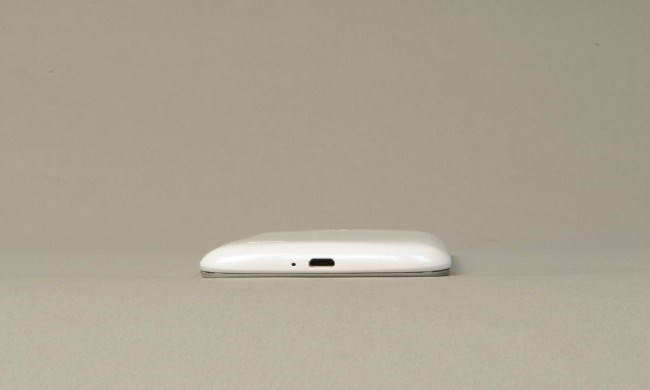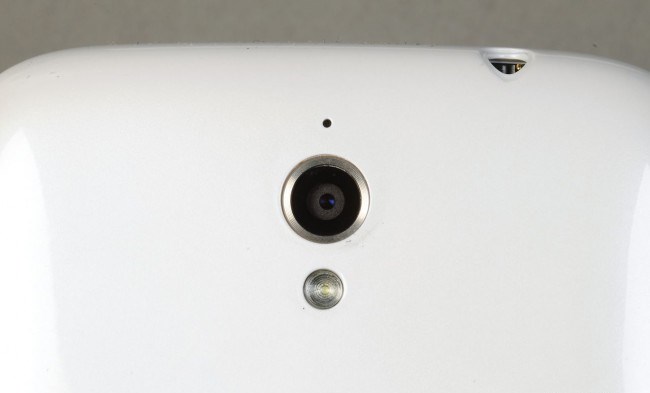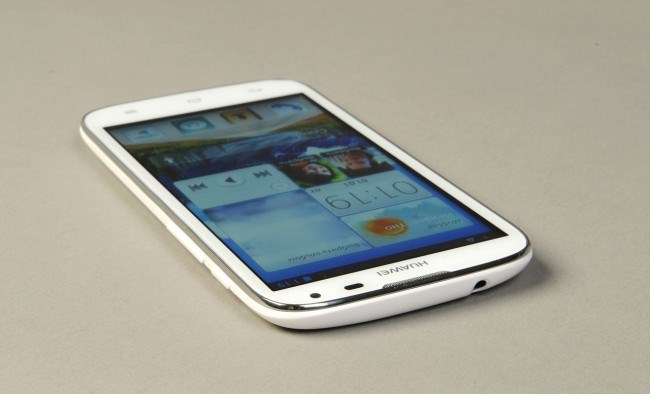Huawei Ascend G610 – a smartphone with a 5-inch IPS-display and a hardware platform MediaTek MT6589. What novelty can stand out from the many similar devices, you learn from the review.
Design and Ergonomics
Design Huawei Ascend G610 can be described as unremarkable. The smartphone is large enough – 142×73, 6×9, 9 mm, but with rounded edges fits comfortably in your hand. The device weighs 170 grams, which is a lot. The boxes around the big screen, but this is not a flagship because it is forgivable.
The keys and the following interfaces: located at the top of the front panel speaker, proximity sensors and lighting, LED missed events and eye front-facing camera, and at the bottom of the front panel are the hardware touch keys with backlight.
Located at the ends of the smartphone power button, volume rocker and a special recess for removing the rear cover (right), 3.5mm (top), Micro-USB and the main microphone (bottom). The left side is empty smartphone. Along the perimeter of the body passes the plastic chrome bezel.
On the back cover is the lens 5 megapixel camera, LED-flash and an additional microphone, and almost at the very bottom, under the grille, multimedia speaker. The back cover is dense, it is made of glossy plastic, with strong squeezing plastic creaks, but the lid is sitting tight. Under the hood there are two slots for standard miniSIM and a slot for memory cards microSD.
I liked the location of the power button – it is just in the place where it should be.
The operating system and shell
The smartphone runs on the operating system of Android 4.2.1 Jelly Bean with its own interface Emotion UI 1.6. The shell looks fresh. Its key feature is the lack of applications menu.
By pressing the power key, we get to the lock screen, in the form of four labels: unlock, call history, camera, and messages. Top of the screen there is the name of the operator and the time and date. Unfortunately, to change the default applications lock screen to the other is impossible. By the way, the lock screen is almost completely repeat the solution used in the shell MIUI.
After the release we get to the desktop, where, as in the case of MIUI V5, can be located as widgets and application icons. You can create folders by dragging one icon to another. On the bottom panel can be taken up to five icons. Supported threads initially present three pieces.
Settings in interface Emotion UI 1.6 is not much. Select the desired effect is present when browsing the pages of the desktop. You can add or remove the required number of desktop and choose the main desktop, which will be performed during the transition function key is pressed home. Wallpaper is interesting settings. You can turn on an option that will change the wallpaper by shaking a smartphone, so there is an opportunity to change the wallpaper on a timer. Lock screen wallpaper and desktop may vary.
Despite all this, yet looked through the elements of a standard interface Android Jelly Bean. Manufacturer redrew not all standard applications. Applications such as a magazine, messages, phone book, calculator, clock, notes, and FM-radio have remained unchanged or have changed only slightly. Currently stands in sharp contrast with quite a pleasant appearance and causes a certain sense of incompleteness. During the test, the interface worked smoothly and without lag.
Among the standard program to highlight the music player. It can enable the display of folders, but there is no equalizer. Standard recorder is capable of recording both stereo and mono sound. There is an application for creating backup copies of software and settings.
Hardware Platform
The smartphone is based on system-on-a-chip MediaTek MT6589. The processor consists of four core Cortex-A7 with a maximum clock frequency of 1.2 GHz. Graphics accelerator PowerVR SGX 544MP. The amount of RAM is standard and is 1 GB. 4 GB of built-in storage available to the user 1.9 GB.
Synthetic tests show why MediaTek MT6589 platform is popular. The device performance is sufficient in order to Asphalt 8 was on high settings with a comfortable frame rate, improves its low resolution display. The lack of RAM is not observed. Applications are not unloaded from memory. Stable performance is excellent, however, as the majority of smart phones based on this chipset.
Voice quality speaker and microphone is good. Multimedia speaker volume is normal. You can miss a call except in noisy environments.
GPS works well but, unfortunately, there is no support for GLONASS.
Autonomy
Device is equipped with a battery capacity of 2150 mA * h If you try, you can defuse the smartphone and the day of active use. In the middle of use Huawei Ascend G610 is able to work for two days. Program to test the battery Antutu Tester issued 638 points.
In the read mode disables all wireless communications, including data transmission in a mobile network, and the display brightness set to 50%. When listening to music worked automatic data synchronization, data transfer. The volume level at 12 out of 15 possible levels. All music files in MP3, 320 Kbit / s. Navigation includes a route in Google Navigation app. Brightness exhibited 50%, all data communication modules disabled. When playing active video data transmission in a mobile network, display brightness set to 50%, the volume level on level 12 of a possible 15. A video file format MKV, resolution 1024h432 points, frame 24. Playing videos from Youtube accompanied not only by the work of the network Wi-Fi, but also the active data transfer. The display brightness is set to 50% volume in the headphones 12 of 15 possible levels.
Camera
Two cameras in the smartphone: 5 megapixel rear and front facing 0.3 MP. Of course, there is a photo in HDR mode and stabilization in video mode. The highest possible quality of recording 720p video.
The settings of the camera a little bit. Among the present panorama shooting mode, exposure metering, HDR, decoration, smile and series. White balance settings are standard. In general settings, you can select the ISO sensitivity from 100 to 800 units. Here you can also change the exposure, saturation, contrast and brightness. Video settings mode is even easier: the quality of the recording, enable or disable tags stabilization and GPS.
Image quality is below average. The pictures do not have enough detail, but the color reproduction is quite good. HDR mode takes pictures with a big delay because fast-moving objects are blurred. Also in HDR mode the colors are too bright. Examples of photos and videos can be seen below.
Display
Huawei Ascend G610 is equipped with IPS-display with a diagonal of 5 inches and a resolution of qHD. Glass protects the screen without oleophobic coating. Auto Brightness is working well and smoothly. The display brightness can be adjusted from 12 to 323 cd / m ², the average is 154 cd / m ². Viewing angles are close to the maximum. Grit screen is not evident and noticeable only under close study.
The low level of the minimum brightness makes it comfortable to use your smartphone in the dark. The screen fades in the sun, but the information remains readable.
The results
Huawei Ascend G610 – an affordable smartphone with a 5-inch qHD IPS-display. One of the advantages of the device can be called a shell Emotion UI 1.6, delighting the user smoothness. We were pleased and ergonomics, high-quality display. The disadvantages are the camera and a lot of weight. But given the low price as a smartphone with a five-inch IPS-display, quad-core processor and 1 GB of RAM, some of the shortcomings can be forgiven.
Liked
+ Shell
+ Display
+ Performance
+ Ergonomics
Do not like it
– Glossy plastic
– Mediocre camera
– Weight
Read another very interesting article about alternative energy of the Sun, water and air.

